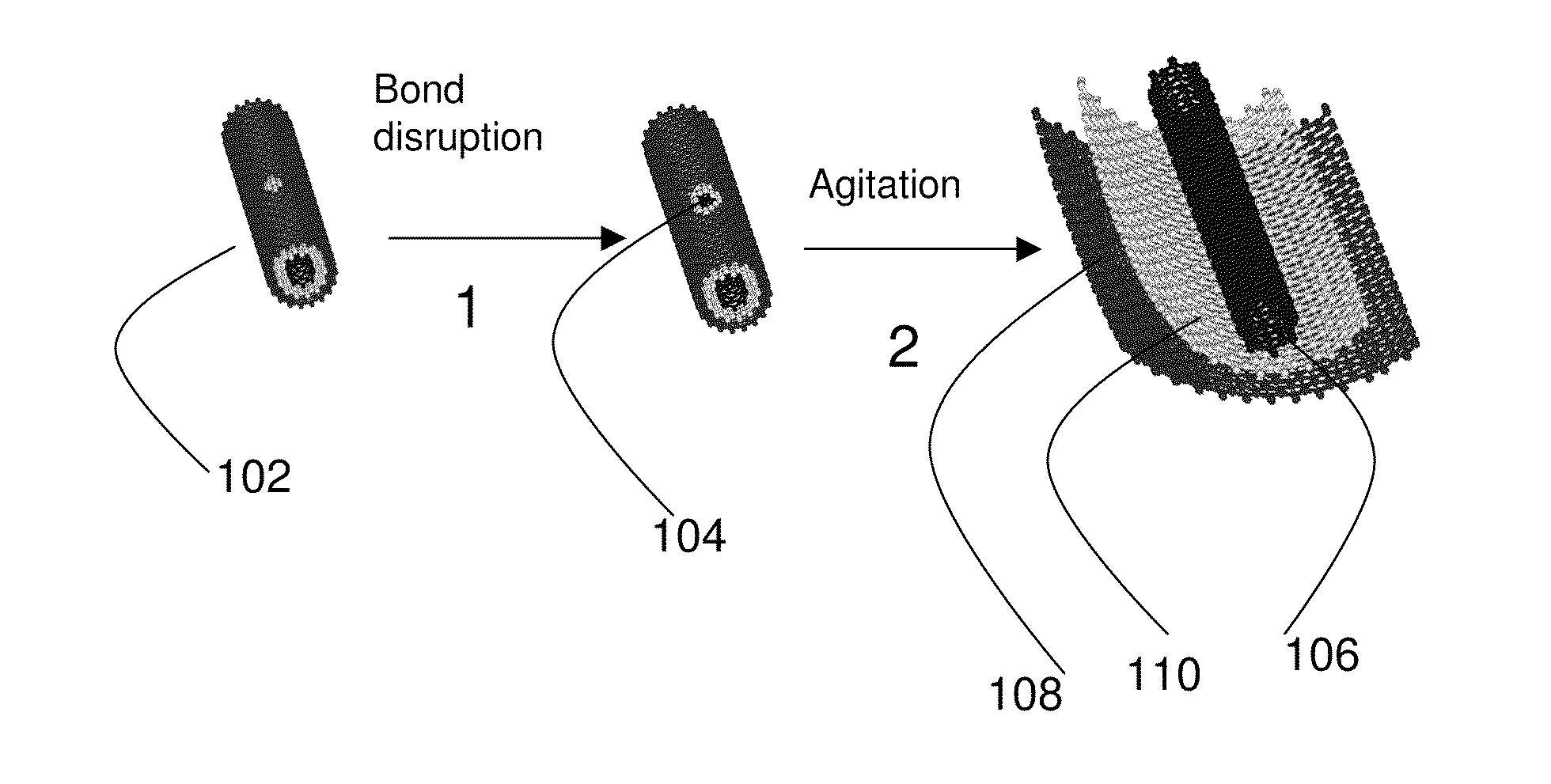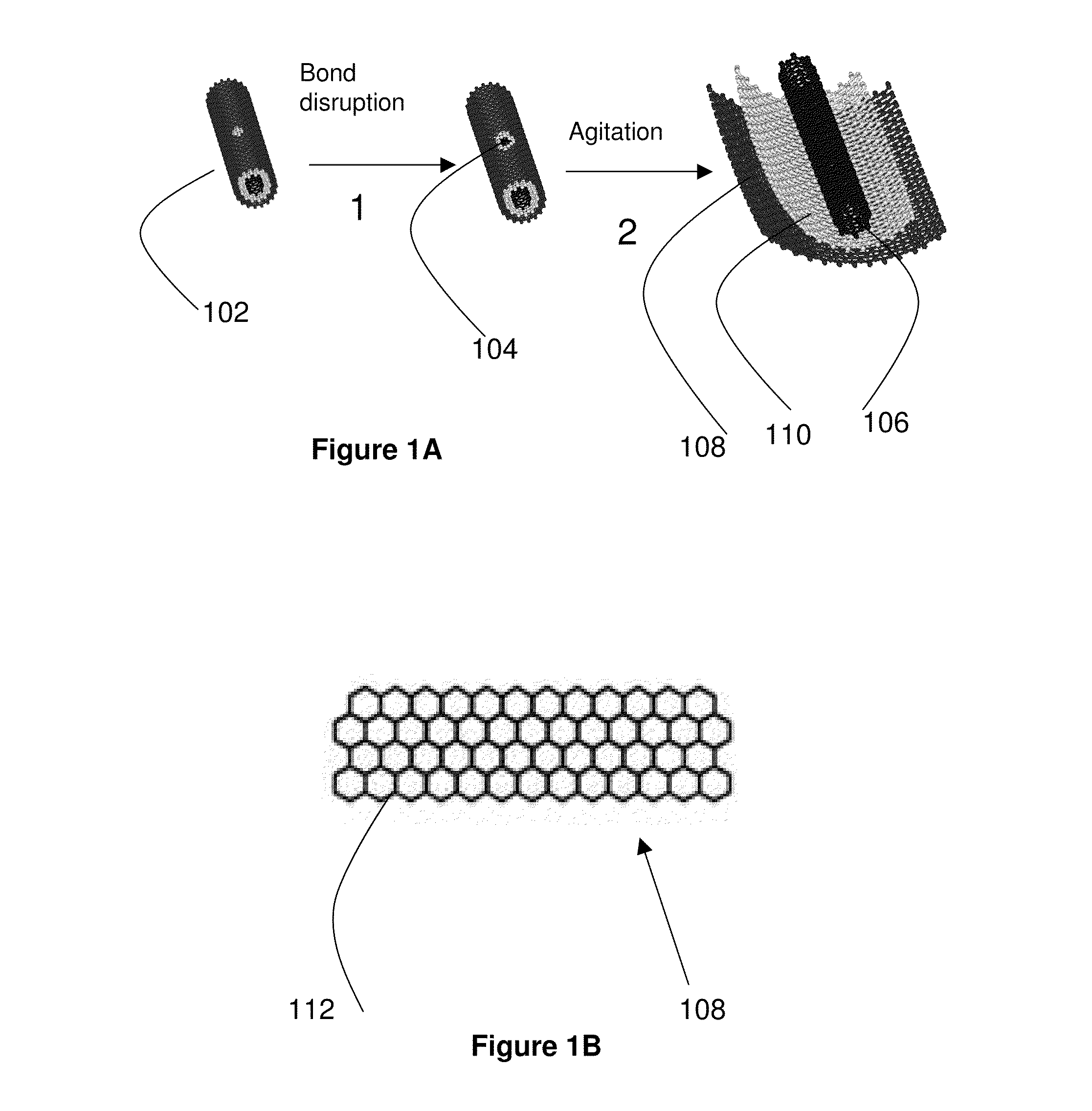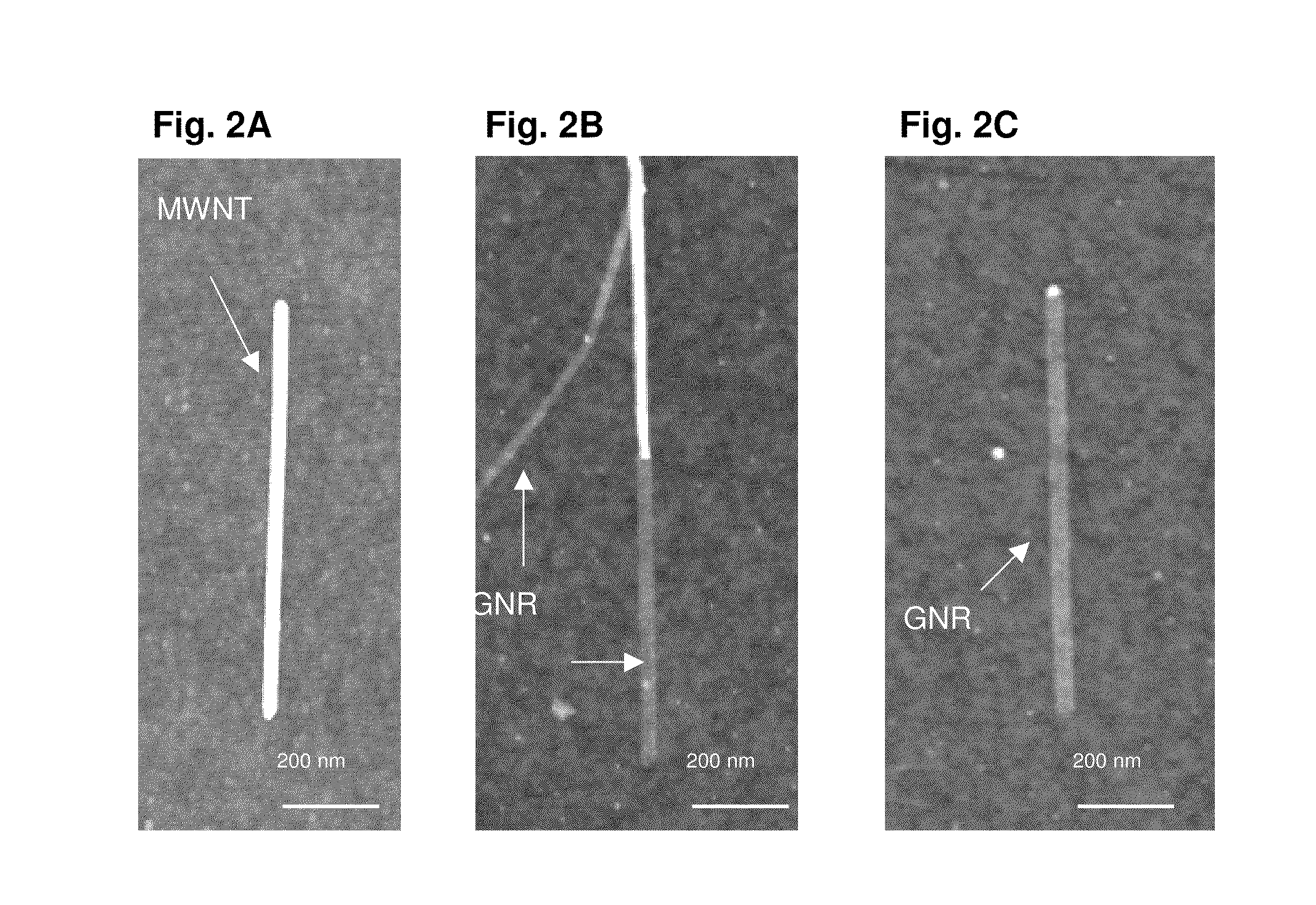Large Scale High Quality Graphene Nanoribbons From Unzipped Carbon Nanotubes
a graphene nanoribbon, unzipped technology, applied in the field of materials, can solve the problems of large-scale high-quality graphene nanoribbons, difficult to obtain gnrs, and oxidized gnrs, and achieve the effect of reducing the number of gnrs on the substrate, reducing the difficulty of gnr formation, and reducing the quality of gnr
- Summary
- Abstract
- Description
- Claims
- Application Information
AI Technical Summary
Benefits of technology
Problems solved by technology
Method used
Image
Examples
example 1
Preparation of GNRs
[0072]30 mg MWCNTs (Aldrich, 406074-500MG) were calcined at 500° C. in a 1-inch tube furnace for 2 hrs. After that, 15 mg calcined MWCNTs and 7.5 mg poly (m-phenylenevinylene-co-2,5-dioctoxy-p-phenylenevinylene) (PmPV, Aldrich, 555169-1G) were dissolved in 10 mL 1,2-dichloroethane (DCE) and then sonicated for 1 hr. After that, the solution was ultracentrifuged at 40,000 rpm for 2 hrs. The supernatant was collected for characterization and found to contain ˜60% GNRs.
example 2
Optimization of the Unzipping Process
[0073]The present method of GNR formation was a simple two-step process and both steps were critical. The pits introduced by calcination made it possible to unzip the MWCNTs by mechanical breaking in the sonication step. The temperature of calcination was related to the activation energies for pits growth and therefore, determined the yield and quality of the obtained GNRs. It was found that 500° C. was the optimized temperature for the production of GNRs at a good yield. Next, the sonication conditions were tested. The calcined MWCNTs were sonicated in DCE for different durations, the solution was briefly centrifuged at low speed (15,000 rpm) to remove the aggregates without losing many GNRs and then deposited onto SiO2 / Si substrates. The percentages of GNRs were <10%, ˜30% and ˜40% after sonication for 0.5, 1, and 2 hrs, respectively. The GNRs obtained upon sonicating for different times were studied by AFM. The obvious dependence of the percen...
example 3
Characterization of GNRs
[0074]AFM images of GNRs were obtained with a Nanoscope Ma multimode instrument in tapping mode. The samples for AFM imaging were prepared by soaking the SiO2 / Si substrates in the GNRs suspension for 15 min, rinsing with isopropanol and then blowing dried. Before AFM imaging, the substrates were calcined at 350° C. for 20 min to remove PmPV.
[0075]GNRs were characterized using a FEI Tecnai G2 F20 X-TWIN transmission electron microscope (TEM) at an accelerating voltage of 120 kV or 200 kV. The TEM samples were prepared by soaking porous Si grids (SPI Supplies, US200-P15Q UltraSM 15 nm Porous TEM Windows) in a GNRs suspension overnight and then calcined at 400° C. for 20 min.
[0076]For characterization of individual GNRs by Raman spectroscopy, low density GNRs were obtained on SiO2 / Si substrates with makers by soaking the substrates in GNRs suspensions for 2 min. Then individual GNRs were located with markers by AFM. Raman spectra of individual GNRs were collecte...
PUM
| Property | Measurement | Unit |
|---|---|---|
| temperature | aaaaa | aaaaa |
| temperature | aaaaa | aaaaa |
| width | aaaaa | aaaaa |
Abstract
Description
Claims
Application Information
 Login to View More
Login to View More - R&D
- Intellectual Property
- Life Sciences
- Materials
- Tech Scout
- Unparalleled Data Quality
- Higher Quality Content
- 60% Fewer Hallucinations
Browse by: Latest US Patents, China's latest patents, Technical Efficacy Thesaurus, Application Domain, Technology Topic, Popular Technical Reports.
© 2025 PatSnap. All rights reserved.Legal|Privacy policy|Modern Slavery Act Transparency Statement|Sitemap|About US| Contact US: help@patsnap.com



